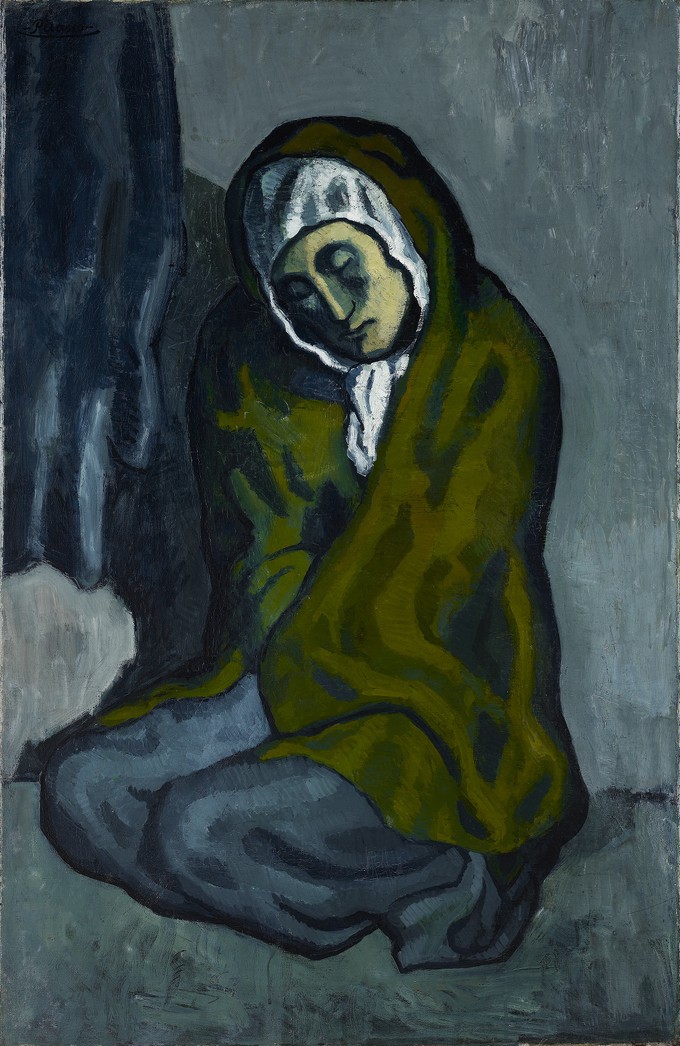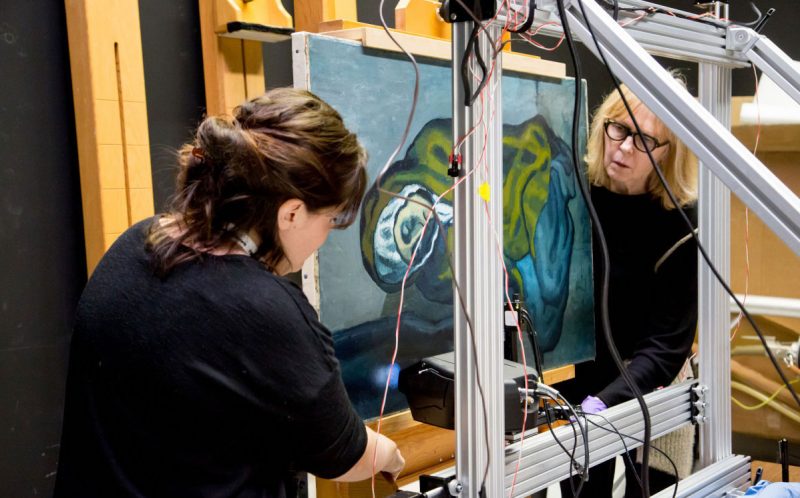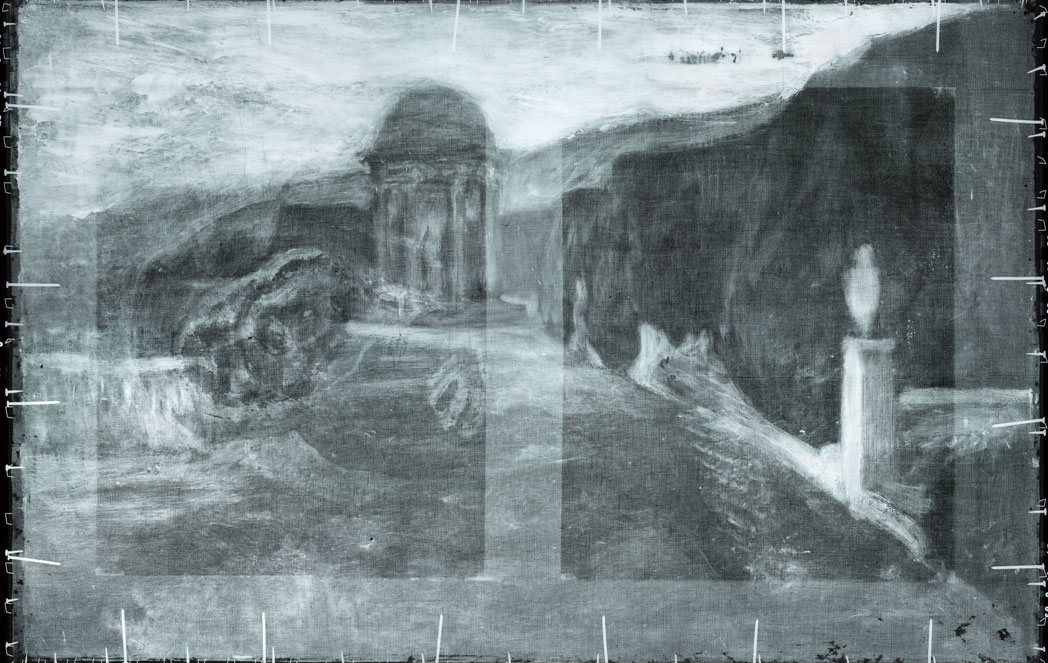- Pablo Picasso painted “La Miséreuse accroupie” – “The Crouching Beggar” – in 1902.
- X-rays of the oil painting taken in 1992 revealed a hidden landscape.
- However, new super-resolution X-ray scans of the artwork show how Picasso changed his mind and painted over his own work, too.
- One of the images Picasso covered up eventually became a new painting.
Spanish artist Pablo Picasso went through great pains with many of his famous 20th-century works, and few are more well-known than those he made during his depressive “blue period,” which ranged from about 1901 through 1904.
However, a new scientific analysis of a major yet somber blue-green Picasso painting, titled “La Miséreuse accroupie” – “The Crouching Beggar” – reveal unprecedented details about the steps he took to complete the work.
New X-ray fluorescence photos of the canvas not only show a landscape by another artist in the best detail yet, but also reveal new twists to the work of art: a major change Picasso made, plus hidden images he painted over, one of which resembles another famous painting.
Crafted with oil paints in 1902, “The Crouching Beggar” shows a destitute woman with a green cloak covering her head, arms, and body.

Curators first took X-ray images of the canvas in 1992.
Metals in the paint responded differently to X-rays, revealing a hidden landscape painted by another artist, who used different colors than Picasso. The pictures revealed that Picasso turned the landscape 90 degrees and painted over it.
But the previous X-rays weren't nearly as detailed as technologies today can provide. Also, a newer technique, called X-ray fluorescence scanning, or XRF, revealed new aspects of Picasso's approach to painting that weren't really possible to discern in the '90s.
"Picasso had no qualms about changing things during the painting process," Marc Walton, a materials scientist at Northwestern University who recently analyzed the painting, said in a press release.
Walton performed the research with colleagues at Northwestern University/Art Institute of Chicago Center for Scientific Studies in the Arts (NU-ACCESS), which he co-directs.
"Our international team - consisting of scientists, a curator, and a conservator - has begun to tease apart the complexity of 'La Miséreuse accroupie,' uncovering subtle changes made by Picasso as he worked toward his final vision," he added.
Peering into Picasso's painting process with X-rays

Major advances in electronics and computing have led to a remarkable ability to analyze famous works of art with non-invasive tricks, including X-rays. Such investigations revealed Picasso frequently changed his mind while painting.
Until recently, the most sensitive machines were very large, and curators at the Art Gallery of Ontario did not want to move "The Crouching Beggar." Also, some paintings don't react strongly enough to X-rays to reveal all of their secrets.
But a portable XRF scanner let NU-ACCESS scientists come to the painting, and new computational methods helped fill in spots the scanner couldn't quite discern.
XRF scanners can exploit how metals in different paints react to the high energy of X-rays. The blues used by Picasso, for example, contain a lot of iron, while the yellows contain chromium. Each metal emits a different frequency of light in response to X-rays, and the scanner picks up on these differences to detect hidden images.
"It seems that Picasso was inspired by this early work as he incorporated some lines of the underlying landscape into La Miséreuse," Danielle Duggins, a graduate student who works with NU-ACCESS, said in a video about the Picasso analysis project.
The clip shows how the beggar matches up to the hidden landscape painting below, which NU-ACCESS recorded in the highest resolution to date:
"However, this underlying painting did not fully correlate with the disturbances observed," Duggins said.
When the team scanned for the element lead, which was in some of Picasso's go-to oil paints, they saw a right arm hidden beneath the beggar's cloak - the same used in Picasso's 1902 watercolor titled "Femme assise."
"This discovery allows art historians to formulate new questions about this intermediate version," Duggins said.
Picasso appeared to have decided mid-painting to turn the woman he was painting into a new work with a different medium, and then turn her into the crouching beggar on the canvas seen today.
"We now are able to develop a chronology within the painting structure to tell a story about the artist's developing style and possible influences," Sandra Webster-Cook, a senior conservator of paintings at AGO, said in the press release.
The research was presented Saturday at the annual meeting of the American Association for the Advancement of Science in Austin, Texas.
Jennifer Mass, who works at the Scientific Analysis of Fine Art in Philadelphia, told Science Magazine that the X-ray work was "phenomenal."
"It's quite an advance in the field of what's possible inside a museum," Mass, who's X-ray-analyzed other Picasso paintings but was not involved in the new research, told the magazine.

